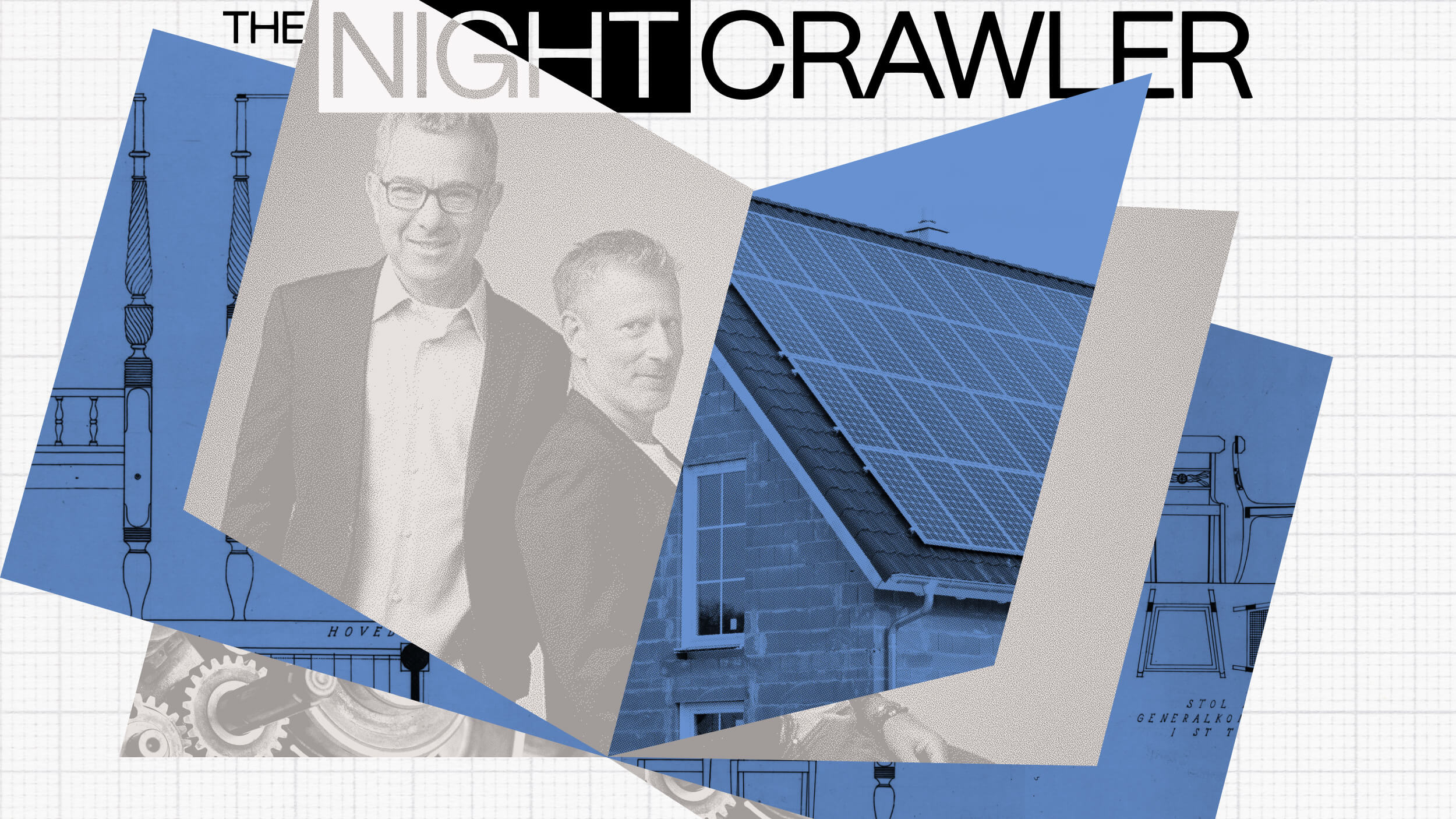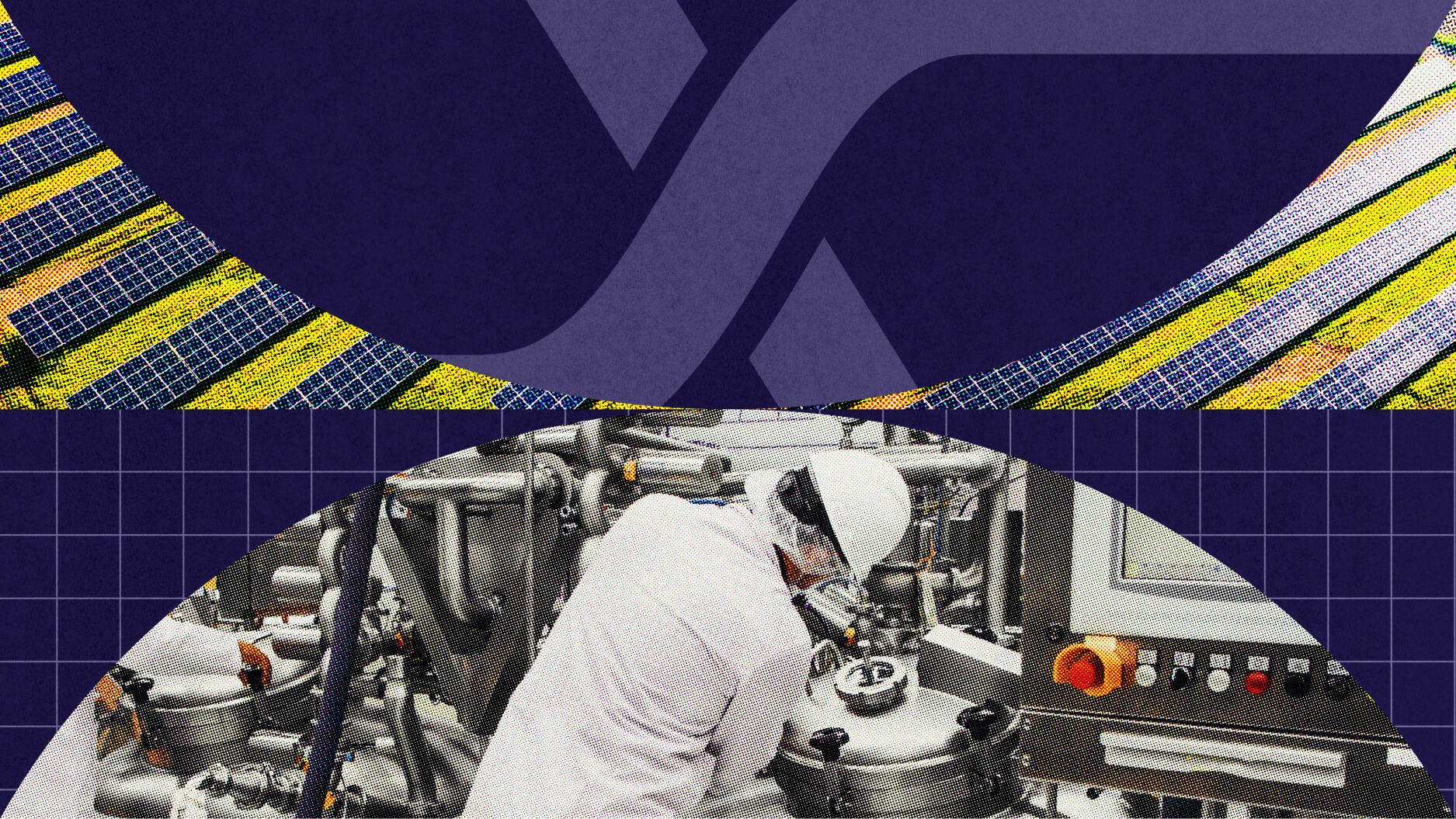“Humanity strikes back”: The 5th industrial revolution

- The future tends to spring up from “new mashups of knowns.”
- Measuring and monetizing AI can be expressed as “The 3 E’s”: efficiency, effectiveness, and exponential.
- The fifth industrial revolution may not be a rejection of digitalization, but rather a focus on carbon-silicon symbiosis.
Mike Bechtel is in the business of “helping today’s leaders arrive at their preferred tomorrows slightly ahead of schedule” — an elegant translation of his official job title: chief futurist with Deloitte Consulting LLP. A prior career path from inventor (12 patents over as many years) to investor (he cofounded early stage VC firm Ringleader Ventures in 2013) was set in motion by the realization, during childhood noodling with his first Commodore 64, “that technology was a sort of ‘force multiplier’.”
Today he works with a variety of organizations on strategic approaches to new technologies, equipped with the guiding insight that seeing the future requires a big-picture perspective: “[not] a telescope, but rather, a wide-angle lens,” as he puts it.
Big Think was delighted to quiz Bechtel on his thoughts, findings and future projections. Read on to discover why businesses are now realizing that GenAI is less about reducing costs and more about elevating ambitions; what’s driving an increased focus on “tech wellness”; why AI is “moving undercover”; his six key investment areas; how technology is currently revealing a massive deficit in leaders; and much more besides.
Big Think: What did you mean when you said that: “Futurists are secretly historians.”
Bechtel: History doesn’t repeat itself, but it often rhymes. Practically speaking, we’ve found that many of the “revolutions” in the history of technology are, through the long lens, evolutionary steps towards surprisingly straightforward “endgames.” Take user interfaces. From PhD’s wielding punched cards to night-schoolers learning BASIC to me and my Windows ’98 for Dummies book, the history of the human-computer interaction has been an evolution towards simplicity. So, when I started hiring young folks who’d rather voice-text into a phone than type on a keyboard, I didn’t see it as unprofessional heresy, but as part of the inexorable march towards simplicity. Once VR headsets look and feel more like stylish designer glasses, we’ll see that they’re a further move in that direction. Simple always wins.

Big Think: Marshall McLuhan famously quipped: “I’m very careful to only predict things which have already happened.” Could you say the same for your own methodology when approaching the future?
Bechtel: How about a quote for a quote? “The future is already here. It’s just not very evenly distributed.” William Gibson, 1984. I love that one because it captures the idea that unprecedented, “new to world” innovations are relatively rare. The future tends to spring up from new mashups of knowns. The key to seeing the future, then, isn’t a telescope, but rather, a wide-angle lens. If you have a pulse on emerging happenings from multiple geographies and sectors, you can piece together faces of your tomorrow, today.
Big Think: Adoption of AI seems to be very unevenly distributed: Should companies be more proactive in shaping their AI strategies, or be more cautious and see how things pan out?
My counsel to my clients: Lead with need. Keep your attention on business problems worth solving, and then (and only then) reach for these shiny new tools.
Bechtel: The genie is out of the bottle, and AI is going to shape everyone’s business strategy whether they’re proactive about it or not. I remember, circa 1997 or so, companies were debating the degree to which they needed an internet strategy. We saw how that movie ended: You were either a disruptor, or you got disrupted. My counsel to my clients: Lead with need. Keep your attention on business problems worth solving, and then (and only then) reach for these shiny new tools. Focusing on, (or worse, blindly idolizing) the AI tools themselves is supply-side thinking. Hammers in search of nails. Start with nails.
Big Think: What are people getting wrong about AI for business?
Bechtel: People are looking at AI as a weight-loss pill whereas they should be looking at it as rocket fuel for elevated ambitions. When clients look at AI as a cost-takeout strategy, they miss part of the plot. Efficiency is swell, but as my old VC partner used to say: “In the long run, you can’t shrink your way to success.” The real value comes in re-allocating the time, talent, and treasure freed from that cost-takeout towards your strategic backlog. Or said another way: It’s not that you don’t need “Toby” anymore, but rather, that you can finally re-deploy Toby to that ambitious project you’ve been kicking the can on. And if you don’t, you’re going to find that some business with no business being in your business is a.) hiring Toby and b.) working to put you out of business.
Big Think: Is GenAI simply a new tool or is it a massive transformational force?
Bechtel: We tend to look at GenAI as a technological evolution that is manifesting as a business revolution. If this sounds “both-sides-y”, let me explain. Technically, large language models (LLMs) and media diffusion models are not unprecedented. They’re deeply precedented. I remember showing early transformer models to one of my clients back in 2019, demonstrating how they could emulate Shakespeare convincingly. He dryly responded: “Sorry buddy, we make hydraulic systems, not poetry.” Then a certain company had the bright idea to slap a chat interface on their LLM and that same client texts me to tell me that he believes this (same core tech) will “meaningfully change the trajectory of their business for the better.” The takeaway, as I see it: technically, GenAI is just the next page in a book that computer scientists have been writing for 200 years. Business-wise, this is the part of that book where our silicon colleagues finally join the white-collar workforce en masse. Spoiler alert: We’re nowhere near the end of the book.
Technically, large language models (LLMs) and media diffusion models are not unprecedented. They’re deeply precedented.
Big Think: Your brand of futurism has a very practical slant — “to understand what will move us from possible to profitable.” Many leaders are currently unsure how to deploy AI at the enterprise level. How do you help clear that fog?
Bechtel: My colleague Laura Shact and I put together a model for measuring and monetizing AI that we call “The 3 E’s.” Think of it like an archery target. The biggest circle, the bronze medal circle, is Efficiency. Doing today’s work faster and/or cheaper. The next circle, Effectiveness. Doing today’s work better. That’s the silver medal strategy. The innermost circle? Exponential. Doing altogether new work that we couldn’t do if-not-but-for-AI. All three score you points, but as we’re finding in market, margins (and moat — aka competitive advantage) improve as you get closer to the bullseye.
Big Think: How do you see enterprise technology mapping out over the next 12 months?
Bechtel: Here’s an attempt at a short cheat-sheet to an admittedly big question. In our 15 years of Deloitte Tech Trends research, we’ve identified 6 key investment areas that have, and will likely continue to, endure: interaction, information, computation, culture, cyber and trust, and core modernization. Our 2024 edition highlighted organizations that were ahead of the curve, using new technologies and approaches that stood to become the norm within 18 to 24 months. We’re now getting into the bulk of these adoption phases:
- Interaction Layer: Spatial computing (AR/VR) is having a massive impact on industrial settings, with the industrial metaverse powering digital twins, spatial simulation, augmented work instructions, and collaborative digital spaces that make factories and businesses safer and more efficient.
- Information Layer: Leaders are further recognizing that Generative AI, at its most strategic, is less about reducing costs and more about elevating ambitions.
- Computation Layer: Businesses are leveraging a heterogeneous mix of hybrid architectures, private and public clouds, hyperscale, niche and edge platforms to maximize their existing investments.
- Culture Layer: We’re seeing an increased focus in empowering the developer experience to improve software engineers’ day-to-day productivity and satisfaction to attract, retain, and engage the best tech talent.
- Cyber Layer: Leading organizations are responding to the proliferation of deepfakes brought on by new AI tools through a mix of policies and technologies designed to more proactively identify harmful content and make employees more aware of the emergent risks.
- Core Layer: An increased focus on tech wellness is being driven by the realization that leading orgs need to forgo reactive and piecemeal approaches to technical debt for a more holistic frame.
In 2024 we noted that Generative AI was the tech story of the year but cautioned that over-focusing on any single technology risks failing to see the forest for the trees. In 2025 that sentiment is evolving, and we’ll start to see that AI is moving “undercover.” It’s becoming the story behind the stories in enterprise IT.
Big Think: How is technology currently affecting the C-suite and the nature of leadership?
Bechtel: I think the #1 thing I’m seeing across C-suite leaders is an emerging imagination deficit. Here’s the thing: Generative AI is like a genie. It’ll grant your wishes, but it’s only as magical as the person making the wish. A quick story: I showed ten C-Level execs an image diffusion model. I told them: “Ask for anything. ANYTHING. You’re literally limited only by your imagination.” Awkward silence: it was clear these gentlemen hadn’t had to imagine much of anything in years. Finally, one guy cracked and asked for a sunset. This (uninspired) prompt resulted in an uninspired picture of a blasé sunset. His chief of staff, a woman roughly 20 years his junior, burst into the circle, asking to give it a whirl. “I wanna see potato chips vs pretzels in a fight. Chips get squirt guns. Pretzels get nunchucks. Whole thing is on Mars.” The resulting image was a modern masterpiece, and the circle of formerly grumpy execs were now literally clapping with delight. But here’s the key takeaway: They should have been applauding her. In a coming age where we’re increasingly limited only by our imagination, a scarcity of imagination figures to become our limiting reagent.
Over the next ten years, we’ll start to see meaningful advances from “tech upon us” to “tech inside us”.
Big Think: If we are currently in the 4.0 phase of the industrial revolution, what will the next phase look like and how soon will it arrive?
Bechtel: Well, (shocker!) let’s start with a little history. The third industrial revolution was about digitalization. The fourth is about the fusion of Infotech with domains like BioTech, SpaceTech, RobotTech, etc. The fifth, I’d posit, might be dubbed “Humanity Strikes Back.” This wouldn’t be a rejection of digitalization, but rather, a focus on carbon-silicon symbiosis. That sounded awfully geeky, so let’s rephrase: Humans & Machines, Better Together. This is already in its larval stages with wearable tech, but over the next ten years, we’ll start to see meaningful advances from “tech upon us” to “tech inside us”. Brain-computer interfaces, biological agents, you name it.





